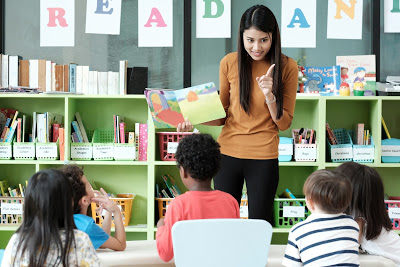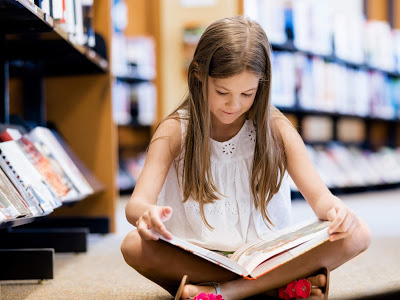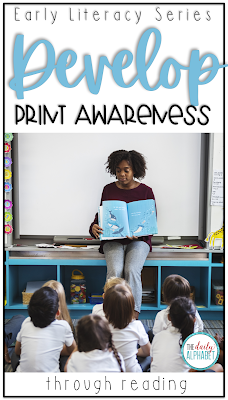
There are many predictors of reading success for the littlest of learners. Print awareness is definitely on that list. What students are taught is important, but perhaps even more crucial is how they are taught. As educators, it is our job to ensure that they learn most effectively. To develop print awareness, a program should contain a combination of teacher read-alouds, shared reading, guided reading as well as some language activities.
Teacher Read-Alouds
Read-alouds are not only great for enjoyment, but they provide a ton of additional experiences for our students. They are helpful for modeling concepts of print and vocabulary introduction. During this time students also begin to develop their story sense. For students to get the most out of a read-aloud, it is important that scaffolding is provided.
Scaffolding is the support that we give to our students as they are being read to. It involves all of the good routines that we go through as we conduct a read-aloud: activating prior knowledge, making predictions and monitoring comprehension throughout the story, and having conversations and sharing thoughts after reading.

Shared Reading
Shared reading goes a little bit deeper than a general read-aloud. Not only do students learn more about print awareness, but you’re also able to have a book talk of sorts with them. These mini-lessons normally consist of three parts, before reading, during reading, and after reading. The book can be introduced, and the teacher can set a purpose for reading. It is important in the initial stages to focus on one specific area per lesson, such as concepts about books, types of text (fiction, non-fiction), concepts about print, and how stories are made (setting, plot), etc. Shared reading is usually conducted using a Big Book or some sort of chart that contains a story, poem or song, etc.
Language Activities
Language activities can be found throughout the day. These activities are all collaborative and independent activities such as word-work activities, songs, games, and poems that would support and aid in letter and sound recognition, concepts of print and vocabulary development.
This would be all of the activities that you create for morning tubs, early finisher activities as well as all of the center activities. It is important to be thoughtful about what you are planning for students to do, because it can aid or hinder their progress.

Independent Reading
It is essential that students be given time to dive into print materials independently, or with a partner. This can be different books, charts, poems, or familiar text to be revisited. Over the years it has looked different, has had many different names, but the objective remains the same.
Whether your school uses Just-Right books, fluency folders, book buddies, SSR (self-sustained reading), or drop everything and read (DEAR), children need time to read without teacher input. It is during this time that they are able to practice everything they’ve learned during instruction.

There are many components of an effective literacy program, and this post covers just a few. It is imperative that we continue to develop print awareness through reading. It is necessary that we know our students and how to configure the environment of the classroom and the accompanying activities. If one were to take a bird’s eye view of a classroom, there would be many moving parts. It can take a while to get all of the pieces moving together but remember consistency is vital!
Pin for later!












